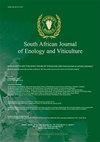Effect of Sun, Oven and Freeze-Drying on Anthocyanins, Phenolic Compounds and Antioxidant Activity of Black Grape (Ekşikara) (Vitis vinifera L.)
IF 1.1
4区 农林科学
Q4 FOOD SCIENCE & TECHNOLOGY
引用次数: 46
Abstract
The aim of this study was to determine whether a change occurs in the phenolic compounds and antioxidant activity of grapes after drying. Grapes pre-treated with potassium hydroxide solution were dried using three different drying methods, namely freeze drying, oven drying and sun drying. The effectiveness of the drying methods was evaluated in terms of total phenolic content, antioxidant activity (ABTS, FRAP and DPPH), individual phenolics and anthocyanins. Losses in total phenolic content of the grapes were found to be 1.89, 20.26 and 46.79% for freeze-, oven- and sun-dried grapes respectively. The DPPH and ABTS antioxidant activities of the grapes decreased after drying by all three methods, while an increase was observed in the FRAP value of freeze-dried grapes compared to the fresh sample. No significant effect of drying methods was observed on the gallic acid, 2,5-dihydroxybenzoic acid and (-)-epigallocatechin gallate contents of the grapes. The highest levels of procyanidin B1, (+)-catechin, (-)-epicatechin, (-)-epicatechin gallate, chlorogenic acid, trans-resveratrol and rutin were determined in freeze-dried grapes. Sun and oven drying caused drastic decreases in all anthocyanins, while no loss of anthocyanin was observed in freeze-dried grapes. Sun drying was found as the most detrimental drying method for grapes in terms of phenolic compounds and antioxidant activity when compared to the other drying methods.太阳、烘箱和冷冻干燥对黑葡萄花青素、酚类化合物和抗氧化活性的影响
本研究的目的是确定葡萄干燥后酚类化合物和抗氧化活性是否发生变化。采用冷冻干燥、烘箱干燥和日光干燥三种不同的干燥方法对用氢氧化钾溶液预处理的葡萄进行干燥。从总酚含量、抗氧化活性(ABTS、FRAP和DPPH)、单个酚类物质和花青素等方面评估了干燥方法的有效性。冻干、烘干和晒干葡萄的总酚含量损失分别为1.89%、20.26%和46.79%。三种方法干燥后,葡萄的DPPH和ABTS抗氧化活性均下降,而与新鲜样品相比,冷冻干燥葡萄的FRAP值有所增加。干燥方法对葡萄没食子酸、2,5-二羟基苯甲酸和(-)-表没食子儿茶素没食子酸盐含量没有显著影响。冻干葡萄中原花青素B1、(+)儿茶素、(-)表儿茶素、没食子酸(-)表儿茶素、绿原酸、反式白藜芦醇和芦丁含量最高。阳光和烘箱干燥导致所有花青素急剧减少,而在冷冻干燥的葡萄中没有观察到花青素的损失。就酚类化合物和抗氧化活性而言,与其他干燥方法相比,日光干燥是对葡萄最有害的干燥方法。
本文章由计算机程序翻译,如有差异,请以英文原文为准。
求助全文
约1分钟内获得全文
求助全文
来源期刊
CiteScore
2.50
自引率
7.70%
发文量
1
审稿时长
>36 weeks
期刊介绍:
The South African Journal of Enology and Viticulture (SAJEV) publishes full-length original Research Papers, Research Notes and Review Papers on all subjects related to enology and viticulture. The SAJEV does not accept articles published in, or submitted to, other journals.

 求助内容:
求助内容: 应助结果提醒方式:
应助结果提醒方式:


